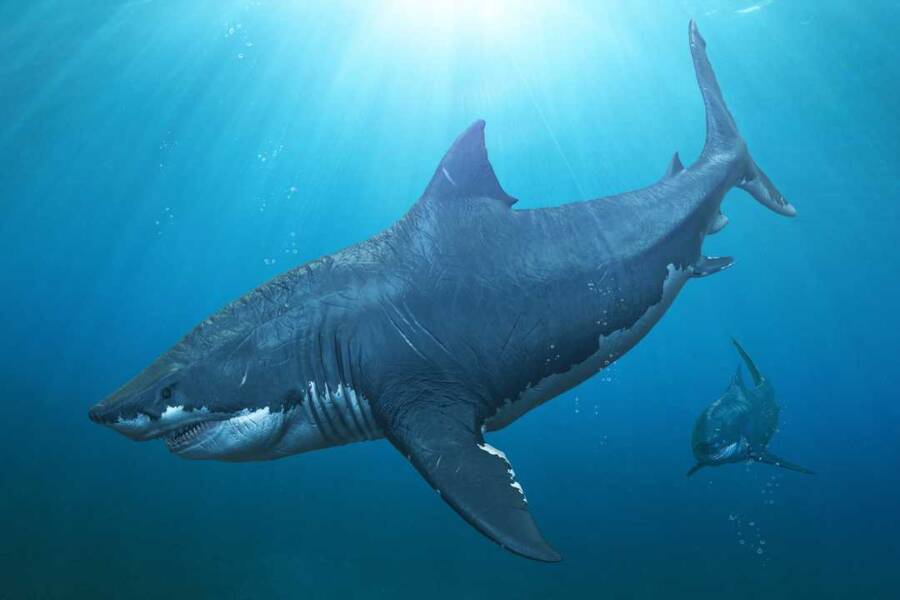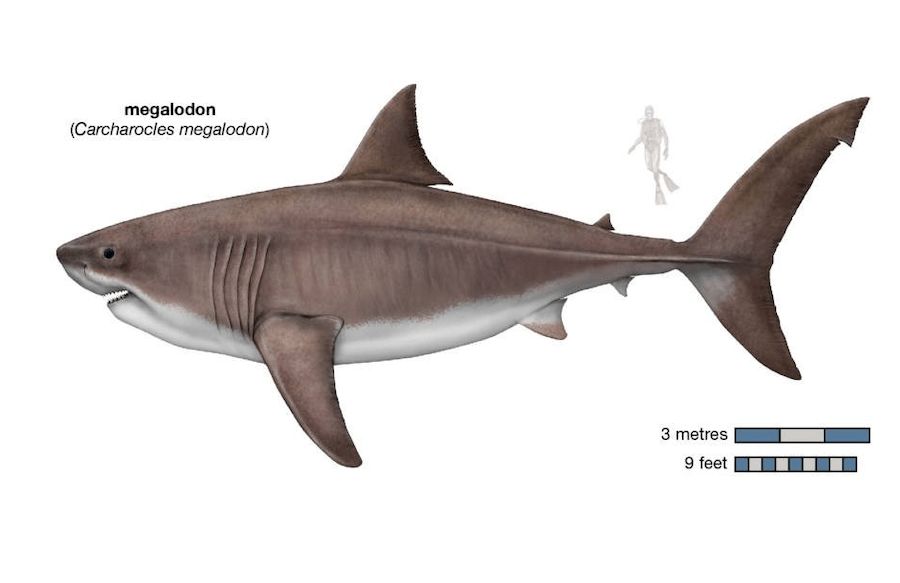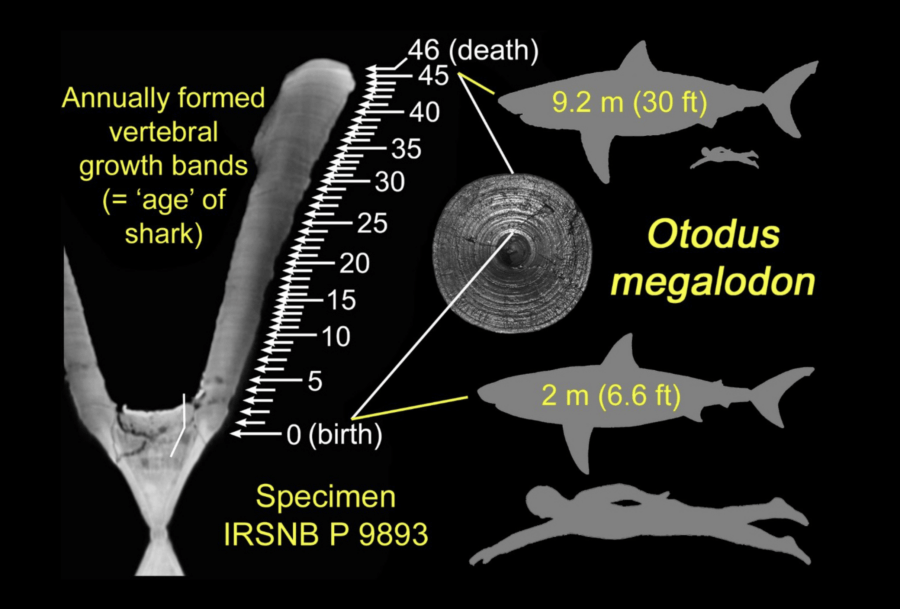New research suggests that in-utero snacking helped make the megalodon the behemoth that it was.

Herschel Hoffmeyer/ShutterstockThese ancient oceanic beasts could live up to 100 years and dominated Earth’s oceans for millions of years.
Megalodon was a massive 110,000-pound prehistoric predecessor of modern-day sharks — and a new study has revealed that newborn megalodons were equally menacing.
Not only were megalodon babies found to be larger than most adult humans at birth, but also that they cannibalized each other in the womb.
Published in the journal Historical Biology, the study examined 150 megalodon vertebra from a 15 million-year-old specimen that was found in Belgium in the 1860s. This was also the first time that researchers have been able to determine the size of these beasts, which could grow up to 50 feet long, at birth.

Encyclopaedia Britannica, Inc./Patrick O’Neill RileyThe size of an average adult megalodon compared to an average adult human. An adult megalodon head can span 15 feet.
According to LiveScience, shark vertebrae grow outward in layers that can be read like tree rings in order to determine age. Consequently, researchers took x-rays of this particular megalodon that showed 46 growth rings, meaning the shark was 46 years old when it died.
Researchers then calculated the shark’s growth patterns by comparing these rings with growth bands in the shark’s spinal cartilage and working backward to the earliest ring, or “band at birth.” It showed that the shark was six and a half feet long at birth.
“To think that a baby megalodon was nearly twice as long as the largest adult sharks we examine is mind-boggling,” said Matthew Bonnan of Stockton University.
“It is quite possible that they represent the largest babies in the shark world,” added Kenshu Shimada, lead author and vertebrate paleontologist at DePaul University in Chicago.
Shimada also posited that megalodons in utero were able to grow so large because they must have been feasting on the unhatched eggs of their siblings. Most sharks hatch from their eggs while inside the mother’s body and are then birthed as live young.
“It’s this big, calorie-dense, nutritious meal that can help those embryos get bigger, faster,” explained Allison Bronson, whose work at Humbold State University in California focuses on the evolution of fish.

DePaul University/Kenshu ShimadaThe annual growth bands (left) of the Belgium megalodon’s vertebra with the estimated silhouettes of the shark at birth and death (right) compared to the size of a typical human adult (bottom).
While in-utero cannibalism might seem counterproductive, researchers argue that it might actually have evolutionary benefits for both the mother and offspring. “Oophagy — egg-eating — is a way for a mother to nourish its embryos for an extended period of time,” said Shimada. “The consequence is that, while only a few embryos per mother will survive and develop, each embryo can become quite large at its birth.”
This growth ring examination also showed that megalodons likely took time to grow humongous in the womb as opposed to experiencing a growth spurt in its youth. As a result, the megalodon was born an apex predator that didn’t have to compete for food or fear predators even as a young shark.
“They could pretty much do whatever they wanted, swim wherever they wanted, eat whatever they wanted,” said shark researcher Jack Cooper at Swansea University in Britain.
This study is particularly significant as learning about megalodon reproduction has been no easy task for researchers. That is in part because shark skeletons are largely comprised of cartilage and therefore degrade long before they can be studied for their biology.
However, there’s still some debate about Shimada’s study as this one specimen is unlikely to represent the average size of an entire species. For now, though, the findings seem nearly as colossal as the megalodon itself.
After learning about man-sized baby megalodons cannibalizing each other in the womb, read about the biggest dinosaur ever found that was ten times larger than a T. Rex. Then, learn 28 interesting shark facts that will surprise and amaze you.





